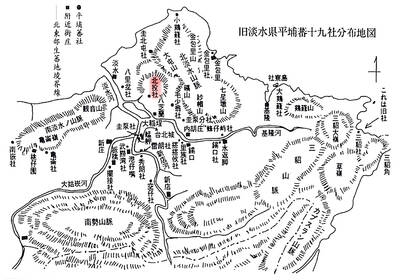Viewed from the air, the vast, cool forests of the Kampar peninsula on Indonesia's Sumatra island are a world away from China's belching factories or America's clogged freeways.
But appearances can be deceptive.
Most of this 400,000 hectare peninsula is peatland: dense, swampy forest that, when healthy, efficiently soaks up greenhouse gases from the world's worst polluters.
When drained, cleared or burned, however, this wilderness transforms into one of the worst climate vandals, releasing six to nine times the amount of carbon stored in regular equatorial forests.
Swamps have not traditionally held the same ecological sex appeal as, say, doe-eyed wildlife. But as nations prepare for a major global conference on climate change in Indonesia next month, the world's focus is changing.
The Dec. 3 to Dec. 14 UN summit on the resort island of Bali will see international delegates thrash out a framework for negotiations on a global regime to combat climate change when the current phase of the Kyoto Protocol ends in 2012.
A figure from the Indonesia-based Center for International Forestry Research puts deforestation at around 25 percent of all man-made carbon dioxide emissions.
Avoiding emissions from deforestation has so far been left out of the Kyoto Protocol on climate change, which focuses instead on reducing emissions from sources such as industry and transport.
Widespread deforestation has made Indonesia the third largest emitter of carbon in the world, the contribution coming most dramatically in the form of near-annual forest fires on islands such as Sumatra and Borneo.
The fires, which send choking smoke as far as Singapore and Malaysia, are for the most part caused by the clearing of peatlands. And the destruction of Indonesia's peatlands accounts for four percent of total global greenhouse gas emissions, according to Greenpeace.
Peatlands are not just a threat when they are burning. A flight over Kampar reveals scars of cleared land gouged from the forest, linked with canals built to transport legal and illegal logs to inland mills.
Much of the carbon released from peatland swamps is the result of draining so the land, or the logs, can be used, says Jonotoro, a peatlands expert at the forestry ministry and an independent consultant.
As the water level drops, more and more of the stock of carbon is released into the atmosphere.
In clear-cut areas, the temperature can rise dramatically in the dry months between July and September to around 70°C, up from a usual cool average of 28°C.
"If the peat is already dry, it's impossible to make it wet," Jonotoro said.
Peatland is made up of a waterlogged store of semi-decomposed vegetation, which squelches underfoot. The deeper the peatland - it can stretch to a depth of more than 15m - the more carbon it holds.
If set on fire, dry peatland can burn for weeks - the fire can be extinguished on the surface, only to continue burning underground and reappear the next day.
In Indonesia, the main driver for the destruction of peatlands is the world's appetite for wood, pulp and palm oil.
The best place for plantations is dry land, but as the rush for Indonesia's last wildernesses continues to turn much of the countryside into a landscape of industrial uniformity, any land will do.
At the western end of Kampar sits Pangkalan Kerinci, home of a massive pulp and paper mill belonging to Asia Pacific Resources International (APRIL).
The mill - and the manicured company town that surrounds it - is the nerve center of a sprawling acacia plantation, much of which is on peatland.
APRIL is keen to boost its environmental credentials, running a tagging system to prevent illegal logging. Two of its security guards were killed in a 2002 confrontation with illegal loggers.
Still, seven of APRIL's partner companies are under investigation for illegally cutting forests.
A cornerstone of APRIL's green efforts is water management in its peatland plantations. At its nearby Pelalawan plantation, a 1,100km network of canals regulates water levels over 100,000 hectares of planted forest.
The goal of the management is to reduce emissions from the peatland beneath, explained Jouko Virta, head of APRIL's global fiber supply. By keeping the water table at the highest level tolerated by the plantation trees, Virta says carbon dioxide emissions from the peatland can be reduced by 80 percent.
The company is now pursuing an audacious plan to push into Kampar, converting more than 100,000 hectares around the peninsula's perimeter into more plantations, while leaving the center untouched.
APRIL says the move will reduce carbon emissions, since much of this perimeter is already heavily degraded, either by illegal loggers or old concessionaires.
By installing their own plantations and managing them responsibly, they believe they will keep illegal loggers from penetrating further inland.
"National parks are the happiest hunting grounds for illegal loggers, and the only way you can protect them is by building barriers," Virta said.
WWF reserved judgment on APRIL's plan, saying they needed to see evidence that the Kampar ring is really as degraded as the company says, and that emissions can actually be reined in as much as they say.
"I think we need to see the scientific analysis," said Nazir Foead, WWF's policy and corporate engagement director, adding that the organization was aiming to complete its own analysis by the Bali meeting next month.
Consultant Jonotoro is unconvinced by APRIL's optimism and said acacia plantations will never be a success on Kampar's nutrient-poor peatland.
"The main point of why they chose this area is because they need natural timber, big hardwood timber" for their mills, he said, referring to their legal practice of felling and processing the trees from their concessions before planting.

Seven hundred job applications. One interview. Marco Mascaro arrived in Taiwan last year with a PhD in engineering physics and years of experience at a European research center. He thought his Gold Card would guarantee him a foothold in Taiwan’s job market. “It’s marketed as if Taiwan really needs you,” the 33-year-old Italian says. “The reality is that companies here don’t really need us.” The Employment Gold Card was designed to fix Taiwan’s labor shortage by offering foreign professionals a combined resident visa and open work permit valid for three years. But for many, like Mascaro, the welcome mat ends at the door. A

The Western media once again enthusiastically forwarded Beijing’s talking points on Japanese Prime Minister Sanae Takaichi’s comment two weeks ago that an attack by the People’s Republic of China (PRC) on Taiwan was an existential threat to Japan and would trigger Japanese military intervention in defense of Taiwan. The predictable reach for clickbait meant that a string of teachable moments was lost, “like tears in the rain.” Again. The Economist led the way, assigning the blame to the victim. “Takaichi Sanae was bound to rile China sooner rather than later,” the magazine asserted. It then explained: “Japan’s new prime minister is

NOV. 24 to NOV. 30 It wasn’t famine, disaster or war that drove the people of Soansai to flee their homeland, but a blanket-stealing demon. At least that’s how Poan Yu-pie (潘有秘), a resident of the Indigenous settlement of Kipatauw in what is today Taipei’s Beitou District (北投), told it to Japanese anthropologist Kanori Ino in 1897. Unable to sleep out of fear, the villagers built a raft large enough to fit everyone and set sail. They drifted for days before arriving at what is now Shenao Port (深奧) on Taiwan’s north coast,

Divadlo feels like your warm neighborhood slice of home — even if you’ve only ever spent a few days in Prague, like myself. A projector is screening retro animations by Czech director Karel Zeman, the shelves are lined with books and vinyl, and the owner will sit with you to share stories over a glass of pear brandy. The food is also fantastic, not just a new cultural experience but filled with nostalgia, recipes from home and laden with soul-warming carbs, perfect as the weather turns chilly. A Prague native, Kaio Picha has been in Taipei for 13 years and